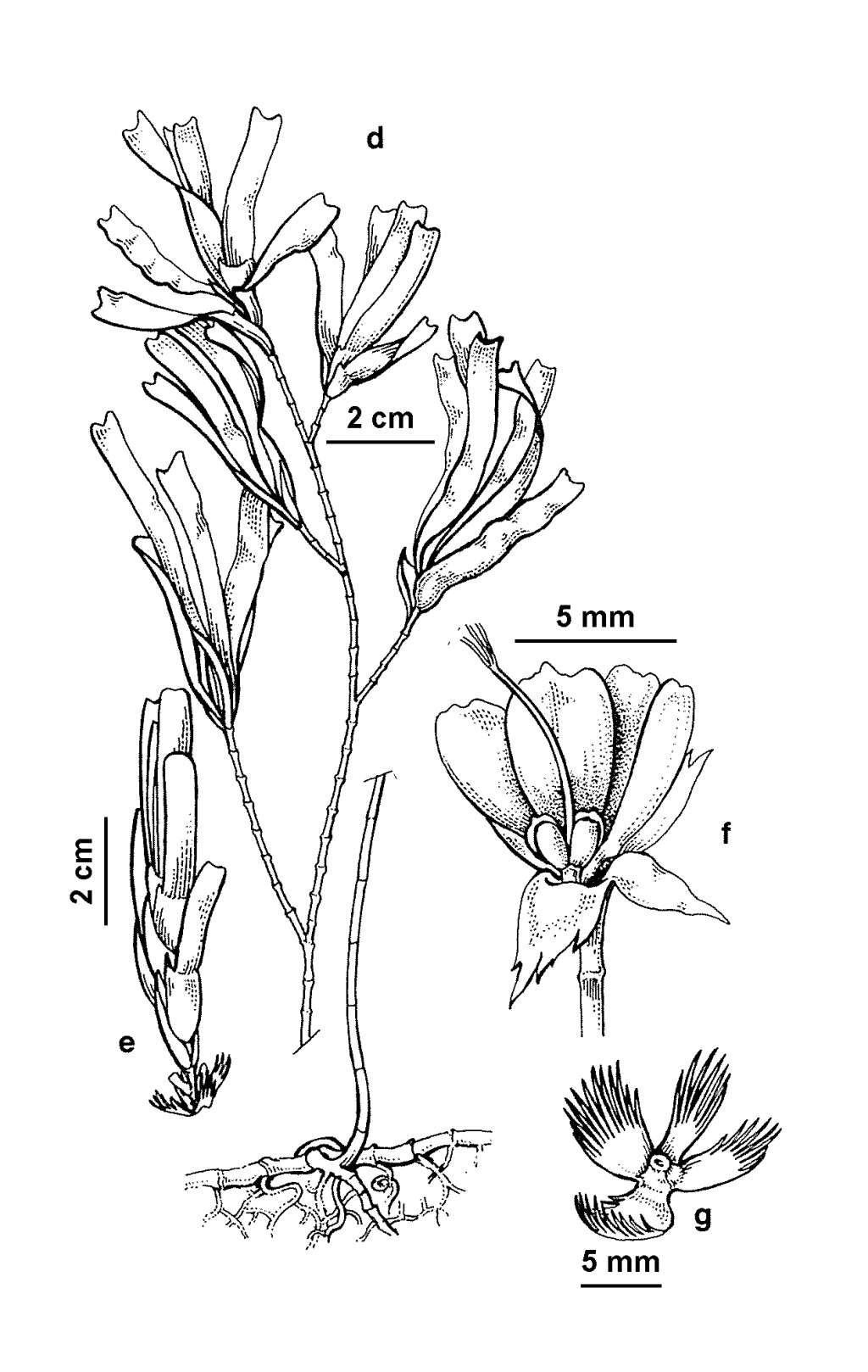Cymodoceaceae
Marine, perennial, submerged herbs, dioecious; rhizomes well differentiated, creeping; branches slender. Leaves alternate, distichous, sessile; lamina narrowly oblong to linear or terete and subulate, base sheathing with auricles present; scales present in each leaf axil. Inflorescence 1-flowered or several-flowered and cymose. Flowers small, unisexual; perianth absent. Male flowers with 2 stamens united along their length to form a single anther mass; pollen filamentous. Female flowers surrounded basally by 1–few hyaline bracts; carpels (1–)2, free, each with 2 whorls of small pericarpic lobes and a simple style terminating in 2 or 3 filiform stigmas. Fruit small, hard, 1-seeded and indehiscent (only 1 carpel develops); seed with endosperm absent.
5 genera with 18 species world-wide; only Amphibolis antarctica in Victoria.
The Cymodoceaceae have often been included in the Zannichelliaceae or the Zosteraceae.
Pollination occurs within the water; the filamentous pollen floats through the water to the stigmas of the female flowers.
Conn, B.J. (1994). Cymodoceaceae. In: Walsh, N.G.; Entwisle, T.J., Flora of Victoria Vol. 2, Ferns and Allied Plants, Conifers and Monocotyledons, pp. 161–162. Inkata Press, Melbourne.
 Spinning
Spinning

